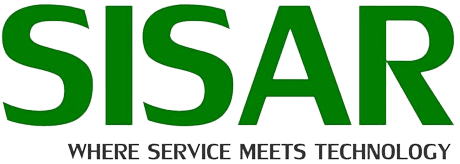Introduction
Organizations seeking to maintain their competitive edge must stay ahead in technology to remain competitive. Two pivotal solutions that have emerged as game-changers in enterprise technology are SAP HANA and SAP S/4HANA, both crafted by the renowned German software giant SAP. These innovative offerings have fundamentally transformed how companies handle data, optimize operations, and make strategic decisions.

In this comprehensive exploration, we’ll embark on a journey to comprehend SAP HANA and SAP S/4HANA in their entirety, unveiling their intricacies, discerning their unique characteristics, and recognizing their pivotal roles in the ongoing evolution of enterprise resource planning (ERP) and data management.
Unpacking SAP HANA
At its core, SAP HANA represents nothing short of a paradigm shift in database management, pushing the boundaries of what was once deemed possible. It stands as a sophisticated in-memory database platform meticulously crafted by SAP.
Unlike conventional disk-based storage systems, SAP HANA taps into the colossal power of Random Access Memory (RAM) to store and process data. This architectural metamorphosis ushers in an era of unparalleled speed and agility in data access and manipulation.
Key Features of SAP HANA
1. Real-time Analytics: Among the standout attributes of SAP HANA is its inherent capability to perform real-time data analytics. This empowers organizations to tap into data as it flows in, facilitating swift and well-informed decision-making.
2. Data Compression: A remarkable feature of SAP HANA is its prowess in data compression. This not only minimizes the storage footprint but also provides a substantial boost to overall performance.
3. Advanced Analytics: SAP HANA proudly flaunts robust support for advanced analytics and machine learning, positioning it as an indispensable tool for organizations driven by data-driven insights.
4. Integration: SAP HANA seamlessly integrates with myriad applications within the SAP ecosystem and beyond, ensuring a harmonious coexistence within intricate IT landscapes.
Use Cases for SAP HANA
The versatility of SAP HANA manifests itself across a multitude of scenarios:
- High-speed Data Processing: The platform shines brightest regarding high-speed data processing, propelling analytics and reporting to new heights by obliterating the latency traditionally associated with disk-based databases.
- Real-time Data-Driven Applications: Organizations can now develop and deploy real-time data-driven applications that harness the sheer speed and computational prowess of SAP HANA.
- Acceleration of Transactional Processing: SAP HANA significantly bolsters transactional processing, promising uninterrupted and efficient operations across diverse business functions.
Navigating SAP S/4HANA
SAP S/4HANA signifies a monumental leap in enterprise resource planning, constituting a comprehensive ERP suite meticulously constructed atop the formidable foundation of SAP HANA.
As a full-fledged ERP solution, SAP S/4HANA extends its embrace to encompass and elevate various business processes. It offers organizations a modern, efficient, and agile platform tailor-made for the digital age.
Key Features of SAP S/4HANA
1. Simplified Data Model: S/4HANA simplifies and rationalizes the data model, surgically removing complexities and enhancing data management efficiency.
2. Modern User Interface: A user-friendly and intuitive interface is a hallmark of S/4HANA, ensuring users can effortlessly navigate and harness the system’s capabilities.
3. Real-time Insights: By harnessing the formidable capabilities of SAP HANA, S/4HANA delivers real-time insights, endowing businesses with the power to make informed decisions in the blink of an eye.
4. Industry-specific Solutions: SAP has thoughtfully curated industry-specific versions of S/4HANA, catering to the unique requirements of diverse sectors, such as manufacturing, healthcare, and retail.
Use Cases for SAP S/4HANA
SAP S/4HANA finds favor in a rich tapestry of organizational contexts:
- Integration of Business Processes: It plays a pivotal role in streamlining and harmonizing business processes across disparate departments, paving the way for heightened operational efficiency.
- Enhanced Decision-making: The real-time insights and analytics capabilities of S/4HANA empower organizations to make decisions of unprecedented quality, enabling them to adapt to the ever-shifting sands of the market deftly.
- Catalyst for Digital Transformation: S/4HANA serves as a cornerstone in the grand mosaic of digital transformation initiatives, proffering a modern ERP platform that effortlessly adapts to the evolving needs of businesses.
The Need for SAP S/4HANA
- As the complexity of SAP’s product portfolio grew, so did system performance and data analysis challenges.
- The traditional SAP ERP systems, such as R/3, were optimized for transactional processing (OLTP) rather than analytical processing (OLAP).
- This limitation led to the development of stand-alone systems like SAP’s Business Warehouse (BW) for more advanced data analysis.
- To address these limitations and streamline the architecture, SAP introduced SAP HANA. HANA, short for “Hasso’s New Architecture,” is a new database designed to leverage the power of in-memory computing, columnar data storage, and parallel processing.
- With HANA, all data is stored in the main memory, eliminating the performance penalty associated with disk I/O.
- The columnar data storage allows for efficient data compression, enabling faster data retrieval and analysis.
The HANA Platform: In-Memory Computing and Columnar Data Storage
The HANA platform serves as the foundation for SAP S/4HANA. It leverages in-memory computing, enabling real-time data processing and analysis. With all data stored in main memory, organizations can access and analyze information instantly, eliminating the delays associated with traditional disk-based systems.
Additionally, HANA’s columnar data storage feature allows for efficient data compression. This means data is stored in a column-wise format, reducing redundancy and optimizing storage space. The compression techniques employed by HANA enable faster data retrieval, leading to improved performance and responsiveness.
SAP S/4HANA: The Updated Business Suite
SAP S/4HANA is an updated SAP Business Suite version built on the HANA platform. It inherits all the advantages of the HANA database, offering real-time analytics, faster transaction processing, and streamlined data models. S/4HANA provides a simplified data structure, eliminating redundant tables and improving data consistency.
Furthermore, S/4HANA introduced a new user interface known as Fiori. Fiori emphasizes a modern and intuitive design focusing on flexibility and mobile accessibility. The UI is role-based, allowing users to access relevant information and perform tasks efficiently. Fiori apps can be customized to meet specific business requirements, providing a personalized and user-friendly experience.
Considerations for Transitioning to SAP S/4HANA
As organizations consider migrating to SAP S/4HANA, several essential factors must be considered. Let’s explore three primary implementation considerations:
1. Define Your Scope and Objectives
Before embarking on an S/4HANA conversion, it is crucial to define the scope and objectives of the project. Each company’s requirements and priorities may differ, so it is essential to assess your organization’s specific needs. Determine which business processes and functionalities are critical for your operations and prioritize them accordingly. This will help streamline the implementation and ensure a successful transition to S/4HANA.
2. Plan for Data Migration and Integration
Data migration is a critical aspect of any ERP system transition. When migrating to S/4HANA, organizations must plan and execute a smooth data migration process. This involves mapping the existing data structures to the new S/4HANA data models and ensuring data consistency and integrity throughout the migration.
Additionally, integration with other systems and applications is crucial for a seamless operation. Organizations must assess the integration requirements and plan to integrate S/4HANA with existing systems. This may involve redesigning interfaces, establishing data interfaces, and ensuring system compatibility.
3. Prepare for Organizational Change
Implementing SAP S/4HANA involves more than just technical aspects; it requires a comprehensive approach to organizational change management. Transitioning to a new ERP system can impact various business functions and processes. It is essential to prepare employees for the change, provide adequate training and support, and address any concerns or resistance.
Organizational change management should also include a thorough analysis of business processes, identifying areas for improvement and optimization. This is an opportunity to streamline workflows, eliminate redundant processes, and leverage the capabilities of S/4HANA to drive efficiency and innovation.
Conclusion
SAP HANA and S/4HANA represent a paradigm shift in enterprise resource planning. The in-memory computing capabilities of HANA, combined with the streamlined features of S/4HANA, offer organizations unprecedented speed, agility, and analytical abilities.
As organizations transition to S/4HANA, careful planning, data migration, and change management are crucial for a successful implementation. Embracing SAP S/4HANA opens new possibilities for businesses to thrive in a rapidly evolving digital landscape.
Remember, embracing change and harnessing the power of innovation is essential for staying ahead in today’s competitive business environment. SAP S/4HANA empowers organizations to drive digital transformation, optimize operations, and unlock new growth opportunities. With the right strategy, implementation partners, and a focus on continuous improvement, businesses can leverage SAP S/4HANA to achieve excellence and set themselves apart in the digital era.







